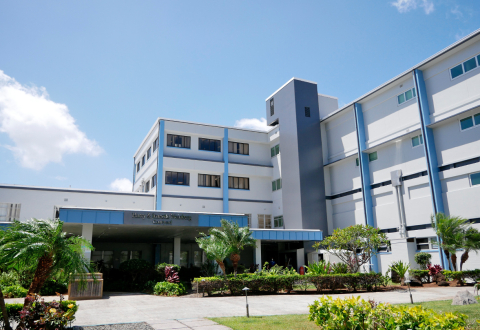
When a serious illness, injury, or surgery changes a loved one's life, the path to recovery can feel overwhelming. After the hospital stay, you’re often faced with a critical decision that will significantly impact their long-term outcome: where should they go next for rehabilitation?
For most families, the choice comes down to two options: an Inpatient Rehabilitation Facility (IRF) or a Skilled Nursing Facility (SNF).
While they may sound similar, the level of care, intensity of therapy, and ultimate goals are vastly different. Making the right choice is crucial for a stronger, faster, and more complete recovery. This guide will break down the differences to help your family choose the path of real rehab.
What is the Main Difference? It’s All About Intensity.
The single most important distinction between an IRF and an SNF is the intensity and structure of the rehabilitation program.
- An Inpatient Rehabilitation Facility (IRF), like REHAB Hospital of the Pacific, is a specialized hospital. The primary mission is to provide intensive, physician-led therapy to help patients regain as much independence as possible so they can return home.
- A Skilled Nursing Facility (SNF), often part of a nursing home, provides skilled nursing care and slower-paced rehabilitation. While rehab is a component, it is not the sole, intensive focus.
Think of it this way: an IRF is like a dedicated training camp for recovery, while an SNF is a place to heal and receive care with some therapy included.
IRF vs. SNF: A Head-to-Head Comparison
When you're evaluating options, the details matter. This table highlights the key differences that directly affect patient outcomes and the family experience.
| Inpatient Rehabilitation Facility (IRF) | Skilled Nursing Facility (SNF) | |
|---|---|---|
| Primary Goal | Intensive recovery to return home | Long-term nursing care & slower-paced rehab |
| Therapy Intensity | 3+ hours per day, 5+ days a week | Lower intensity, often a few hours per week |
| Physician Care | Daily oversight by a rehab-focused physician | Physician visits are typically less frequent |
| Proven Outcomes | Higher likelihood of returning home | Often a setting for long-term residency |
From a Patient’s Perspective: The Impact of Intensive Rehab
The data in the table is clear, but what does that difference in care feel like for a patient?
For Tracey Jo Saiki, who came to REHAB Hospital after a devastating stroke, the focused, intensive environment made all the difference. The daily therapy and specialized care did more than just heal her body; it gave her the strength to move forward.
"My REHAB team helped me recover physically, mentally and emotionally. They gave me hope."
– Tracey Jo Saiki, Stroke Survivor (Source: REHAB Hospital of the Pacific)
Tracey Jo's story is a testament to the power of a true IRF environment. The daily physician oversight, the minimum of three hours of therapy, and the support of a specialized team are what turn statistics into success stories, helping patients like her return to the lives they love.
Answering Your Questions
Who is a good candidate for an IRF?
A patient who has experienced a life-altering medical event but is medically stable and able to tolerate several hours of intensive therapy a day is an ideal candidate. This includes individuals recovering from:
- Stroke
- Traumatic Brain Injury (TBI)
- Spinal Cord Injury (SCI)
- Major Orthopedic surgery, like a joint replacement
- Other complex neurological or debilitating conditions
Why does daily physician oversight matter?
In an IRF, a physiatrist—a doctor specializing in physical medicine and rehabilitation—leads the care team. They see the patient daily, manage complex medical issues, and adjust the rehabilitation plan in real-time. This active medical management is key to preventing complications and maximizing recovery, a level of oversight not required in an SNF.
What does "3 hours of therapy" really mean?
This is the minimum standard for an IRF. It means your loved one will be actively engaged in at least two types of therapy (like physical, occupational, or speech therapy) for at least three hours a day, five days a week. This intensity is proven to rebuild strength, restore function, and retrain the brain and body more effectively. Research has consistently shown that this intensive therapy leads to better long-term outcomes compared to the less frequent therapy in an SNF.
The REHAB Difference: Hawaii’s Only Certified IRF
Choosing REHAB Hospital of the Pacific means choosing a facility held to the highest national standards. As Hawaii’s only certified Inpatient Rehabilitation Facility, we are singularly focused on one thing: rebuilding lives.
Our entire model is built around providing the intensive, comprehensive care that defines a true IRF. Our outcomes speak for themselves, with 83.2% of our patients returning home or to the community—significantly higher than the national average.
Take the First Step on the Road to Recovery
When your family is facing a long road to recovery, the first step you take is the most important. Choose the path that leads to the best possible outcome. Choose intensive, physician-led, proven rehabilitation.
Our team is ready to help you and your family. Contact us today to learn more about our programs or to speak with an admissions coordinator at our Honolulu, Aiea, or Hilo locations.
